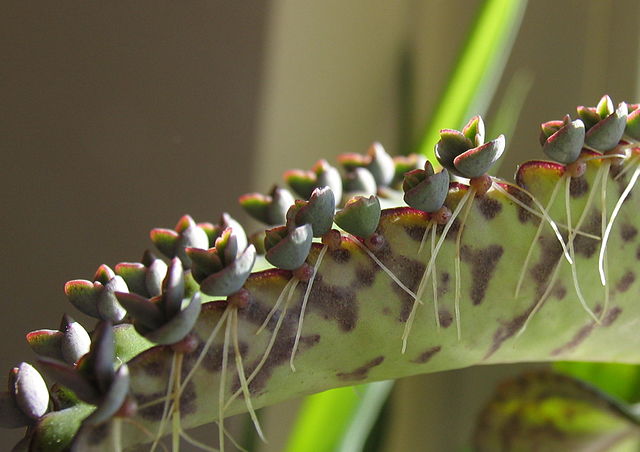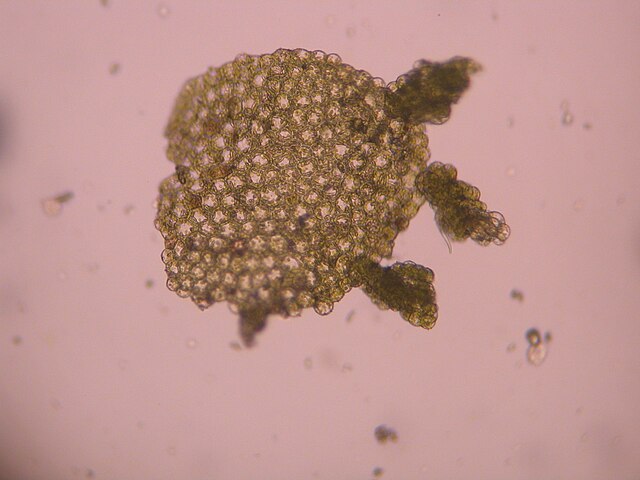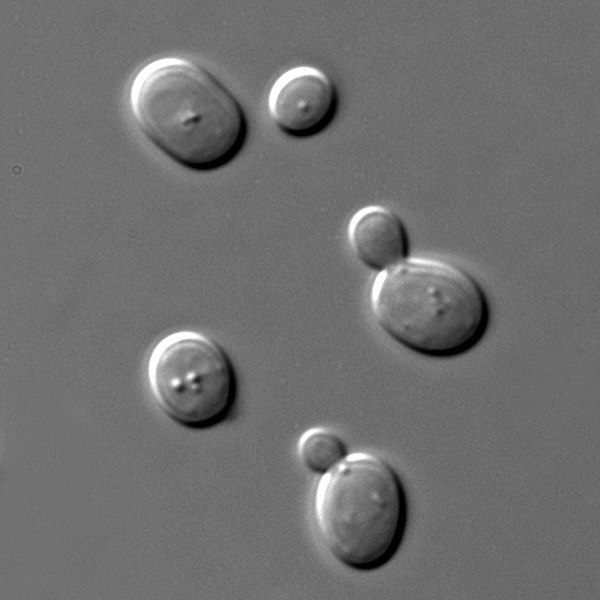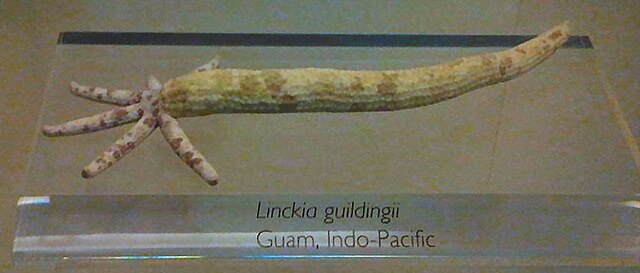Vegetative reproduction is a form of asexual reproduction occurring in plants in which a new plant grows from a fragment or cutting of the parent plant or specialized reproductive structures, which are sometimes called vegetative propagules.
Production of new individuals along a leaf margin of the air plant, Kalanchoe pinnata. The small plant in front is about 1 cm tall. The concept of "individual" is stretched by this process.
Kalanchoe daigremontiana produces plantlets along the margins of its leaves. When they are mature enough, they drop off and root in any suitable soil beneath.
Vegetative reproduction from a stem cutting less than a week old. Some species are more conducive to this means of propagation than others.
A bulb of Muscari has reproduced vegetatively underground to make two bulbs, each of which produces a flower stem.
Asexual reproduction is a type of reproduction that does not involve the fusion of gametes or change in the number of chromosomes. The offspring that arise by asexual reproduction from either unicellular or multicellular organisms inherit the full set of genes of their single parent and thus the newly created individual is genetically and physically similar to the parent or an exact clone of the parent. Asexual reproduction is the primary form of reproduction for single-celled organisms such as archaea and bacteria. Many eukaryotic organisms including plants, animals, and fungi can also reproduce asexually. In vertebrates, the most common form of asexual reproduction is parthenogenesis, which is typically used as an alternative to sexual reproduction in times when reproductive opportunities are limited. Komodo dragons and some monitor lizards can reproduce asexually.
Asexual reproduction in liverworts: a caducous phylloid germinating
The yeast Saccharomyces cerevisiae reproducing by budding
Vegetative plantlets of mother-of-thousands, Bryophyllum daigremontianum (Kalanchoe daigremontiana)
Linckia guildingi "comet", a starfish regrowing from a single arm







